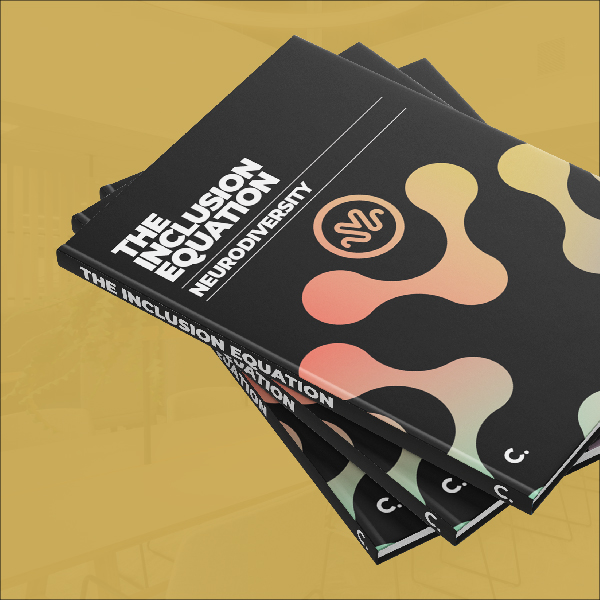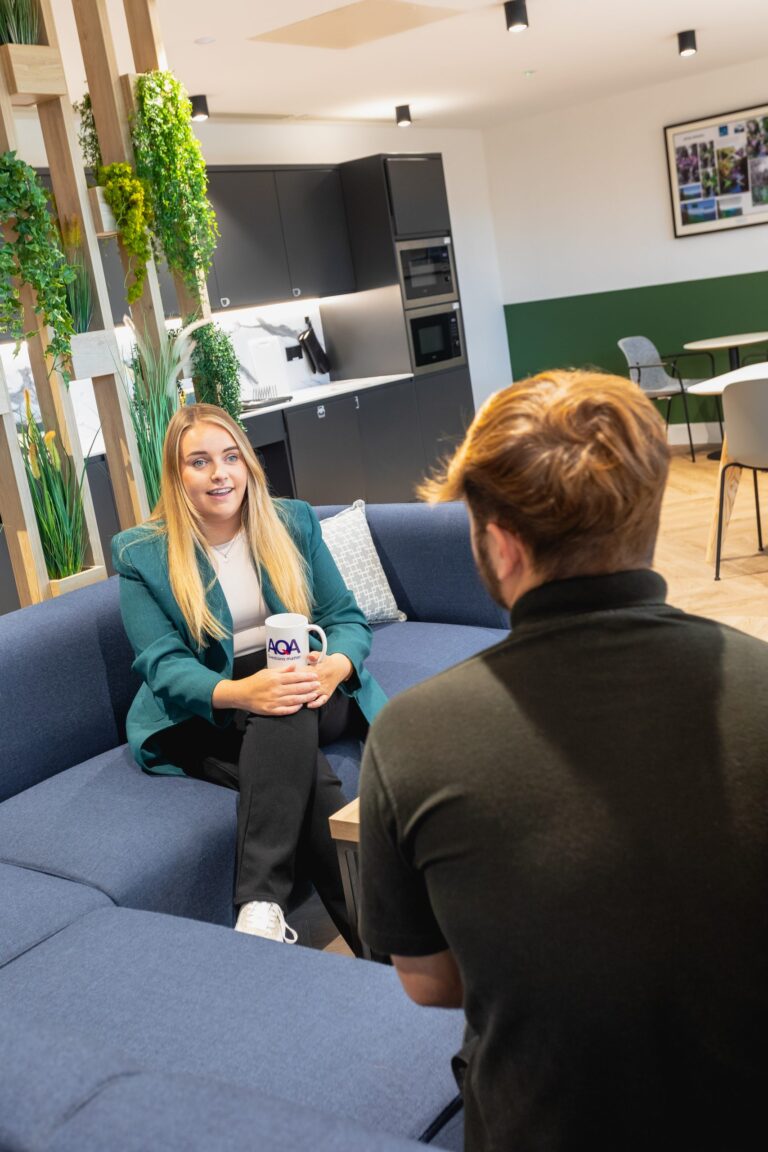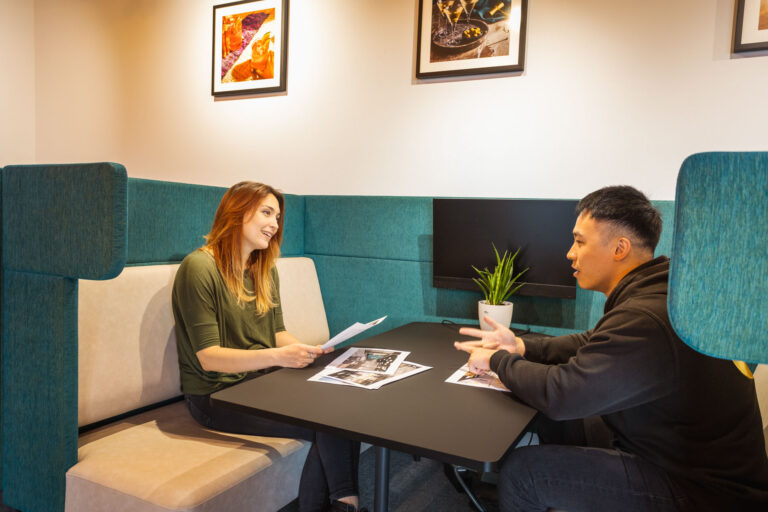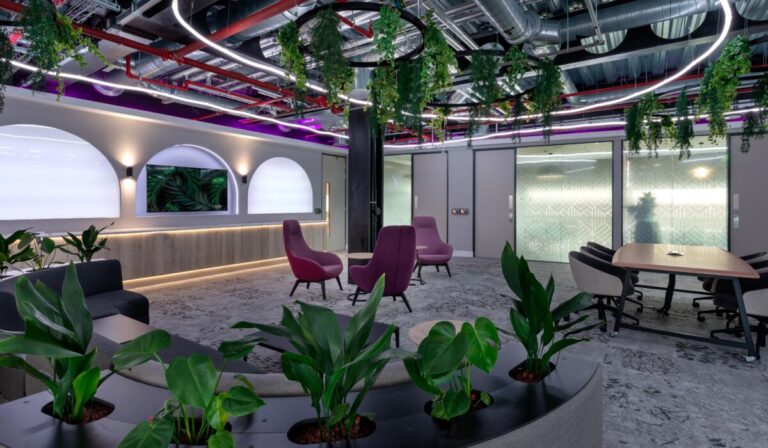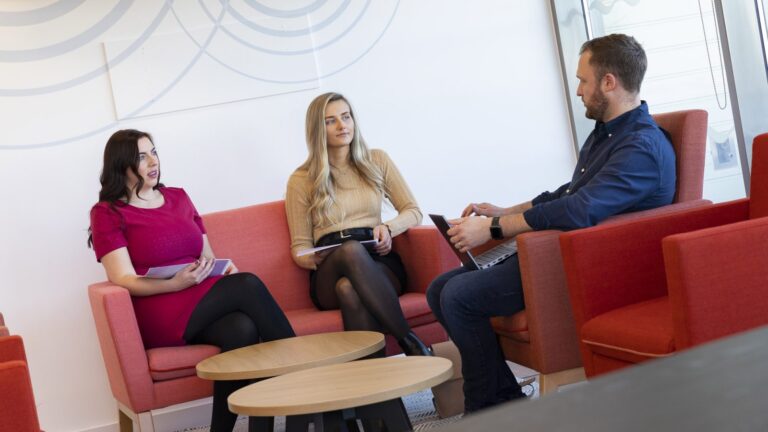
Supporting and Promoting Neurodiversity in the Workplace: A Comprehensive Guide
Date
30 April 2024
Read length
5 min
Neurodiversity is the recognition that everyone’s brain works in different ways, and these differences are a natural and valuable part of human variation.
Supporting and promoting neurodiversity in the workplace: A Comprehensive Guide
The importance and impact of neurodiversity in the workplace
What does neurodiversity mean?
Neurodiversity is the recognition that everyone’s brain works in different ways, and these differences are a natural and valuable part of human variation. This concept encompasses a range of cognitive abilities and ways of processing information, including conditions such as ADHD, autism, and dyslexia. Each of these conditions brings its unique set of characteristics and challenges. By understanding and valuing these differences, rather than viewing them as deficits, we can create more inclusive and supportive workplaces.
Why is neurodiversity important in the workplace?
Recent insights underscore the critical need for workplace designs that recognise and accommodate neurodiversity, acknowledging that about one in seven people are thought to be neurodiverse, including those with ADHD, autism, and dyslexia. These individuals are often lauded for their exceptional lateral thinking, analytical capabilities, and creative talents, which are invaluable assets in any business setting. The significance of neurodiversity in the workplace lies in the unique perspectives and skills that neurodiverse individuals bring to a team. Embracing these differences enhances not only the environment for those with neurodiverse conditions but also contributes to the resilience and overall performance of the entire team.
Unlocking the potential of neurodiversity
Acknowledging the unique benefits that neurodiverse individuals bring to the workplace, such as fresh perspectives, innovation, and meticulous attention to detail, is crucial. These talents allow for creative problem-solving and enhance the collective intelligence and dynamism of the team.
How can you support and promote neurodiversity in the workplace?
Supporting and promoting neurodiversity in the workplace involves a holistic and multi-faceted approach, encompassing the refinement of physical environments, the modernisation of recruitment processes, and the development of inclusive workplace policies. This comprehensive strategy aims to meet the diverse needs of neurodiverse employees, thereby enhancing their productivity and overall work experience.
Catering to neurodiversity with office interior design
Research has highlighted the importance of creating work environments tailored to the specific sensory needs of neurodiverse employees. This can range from designing spaces that reduce sensory overload through the use of natural lighting and quiet zones to ensuring workspaces are easy to navigate with clear signage.
Let’s discover what changes can make a big difference in making the office a better place for neurodiverse individuals to work and share their talents.
1. Flexibility in workspace
Offering a variety of workspace options caters to the differing needs of neurodiverse individuals. Practical tips include:
- Implement Adjustable Furniture: Provide standing desks and adjustable chairs to cater to different comfort needs.
- Create Zones for Different Activities: Designate specific areas for quiet work, collaboration, and relaxation to suit various tasks and preferences.
- Offer Personalisation Options: Allow employees to personalise their workspace with ergonomic accessories or personal items to make the space more comfortable and conducive to productivity.
2. Reducing sensory overload
Minimising sensory stimuli is crucial for neurodiverse individuals who might be more sensitive to their environment. Here’s how:
- Utilise Natural Light: Maximise the use of natural light and offer blinds or curtains for personal light control.
- Designate Quiet Zones: Create areas specifically designed to be free from loud noises or visual clutter.
- Choose Calming Colours and Textures: Opt for wall colours and furniture fabrics that are soothing and avoid patterns that are overly stimulating.
3. Clear navigation
An easily navigable workspace can significantly reduce anxiety and increase efficiency. To achieve this:
- Implement Clear Signage: Use large, readable signs to mark different areas and provide maps or directories at key points.
- Minimise Clutter: Keep walkways clear and workspaces tidy to reduce cognitive overload and enhance navigability.
- Provide Visual Guides: Consider using colour coding or symbols to guide employees through the workspace easily.
4. Technology and tools
Incorporating the right technology can support diverse working styles and enhance productivity. Consider the following:
- Offer a Variety of Software Tools: Provide access to project management tools, communication platforms, and accessibility software to support different needs.
- Invest in Quality Hardware: Ensure that computers, monitors, and other equipment meet the latest standards and are adaptable for various uses.
- Provide Training: Offer regular training sessions on how to effectively use these tools to ensure all employees can benefit from them.
5. Involving employees in design decisions
Involving neurodiverse employees in the design process ensures that the workspace meets their specific needs. Here’s how to do it:
- Conduct Surveys and Interviews: Regularly gather feedback on the workspace and potential improvements from neurodiverse employees.
- Create a Feedback Loop: Establish a system where employees can easily provide suggestions for the workspace design and receive updates on implemented changes.
- Involve Employees in Testing: Before rolling out new design changes or technology, involve neurodiverse employees in the testing phase to gather direct feedback on their effectiveness.
Implementing these practices will not only create a more inclusive environment for neurodiverse employees but will also contribute to a more adaptive, comfortable, and productive workplace for everyone.
Adapting the recruitment process to welcome neurodiversity
Creating a more inclusive workplace starts with the job application process. By simplifying job descriptions, companies can ensure that roles and expectations are clear, making positions more accessible to neurodiverse candidates who may be exceptional at their job but overwhelmed by complex listings. Introducing alternative application methods, such as practical assessments or structured interviews, can also play a significant role. These approaches allow candidates to demonstrate their skills and capabilities in environments that better suit their strengths, rather than relying solely on traditional CVs and cover letters which may not fully capture their potential.
Once neurodiverse individuals join a team, acknowledging their unique needs is paramount. Engaging in open discussions about their specific requirements allows for the creation of a supportive work environment tailored to each individual. This can include adjustments like offering flexible working hours to accommodate different productivity patterns or providing technological aids that help streamline tasks and communication.
Effective staff training and policies for neurodiversity
Educating all staff about neurodiversity and how to support their neurodiverse colleagues is fundamental. Training should cover understanding different neurodiverse conditions, effective communication strategies, and how to create an inclusive environment for everyone. By raising awareness and reducing stigma, training helps foster a workplace where neurodiverse individuals feel valued and supported.
Here’s how it can be structured:
- Understand different conditions:
- Introduce the basics of various neurodiverse conditions such as ADHD, autism, and dyslexia.
- Focus on the strengths and challenges associated with each, avoiding stereotypes.
- Communication strategies:
- Equip staff with clear and constructive ways to communicate with neurodiverse colleagues.
- Encourage open dialogue and active listening techniques.
- Creating an inclusive environment:
- Share practical steps for making the workplace more inclusive, such as flexible working arrangements and personalised workspace adjustments.
- Highlight the importance of a culture that values diverse contributions.
- Benefits of neurodiversity:
- Discuss the advantages of having neurodiverse individuals on a team, including enhanced problem-solving and innovation.
- Use examples to illustrate how neurodiverse talents can benefit projects and processes.
- Reducing stigma:
- Address common misconceptions and stereotypes about neurodiversity.
- Share stories or case studies that show the positive impact of supporting neurodiverse colleagues.
- Feedback and continuous learning:
- Create channels for feedback on the training program and suggestions for improvement.
- Commit to ongoing learning and adaptation of training content based on new research and feedback.
Final thoughts on how to support and promote neurodiversity at work
Embracing neurodiversity at work transcends mere adjustments to the physical environment. It signifies a deeper recognition of the unique talents and perspectives that neurodiverse individuals bring to the table. By nurturing an inclusive culture, implementing supportive policies, and delivering comprehensive education across all levels of the organisation, businesses can harness the full potential of their workforce.
This not only ensures that neurodiverse employees feel truly valued and understood but also enables them to excel, contributing significantly to the company’s innovation, problem-solving capabilities, and overall competitiveness.
Our whitepaper ‘The Inclusion Equation’ serves as a valuable resource in this regard, offering insights and strategies on how to effectively support and integrate neurodiverse talent within the workplace. It provides a deeper dive into the benefits of a neurodiverse workforce and practical steps organisations can take to foster an environment where everyone has the opportunity to succeed.
Explore ‘The Inclusion Equation’ today and let this be your next step towards building a more diverse, inclusive, and thriving workplace.
See how we could help with your new office interior design or office design and build project here
Get in touch
We love nothing better than talking all things workplace and design – got a question, potential project or just need some guidance?
Drop us a note…


